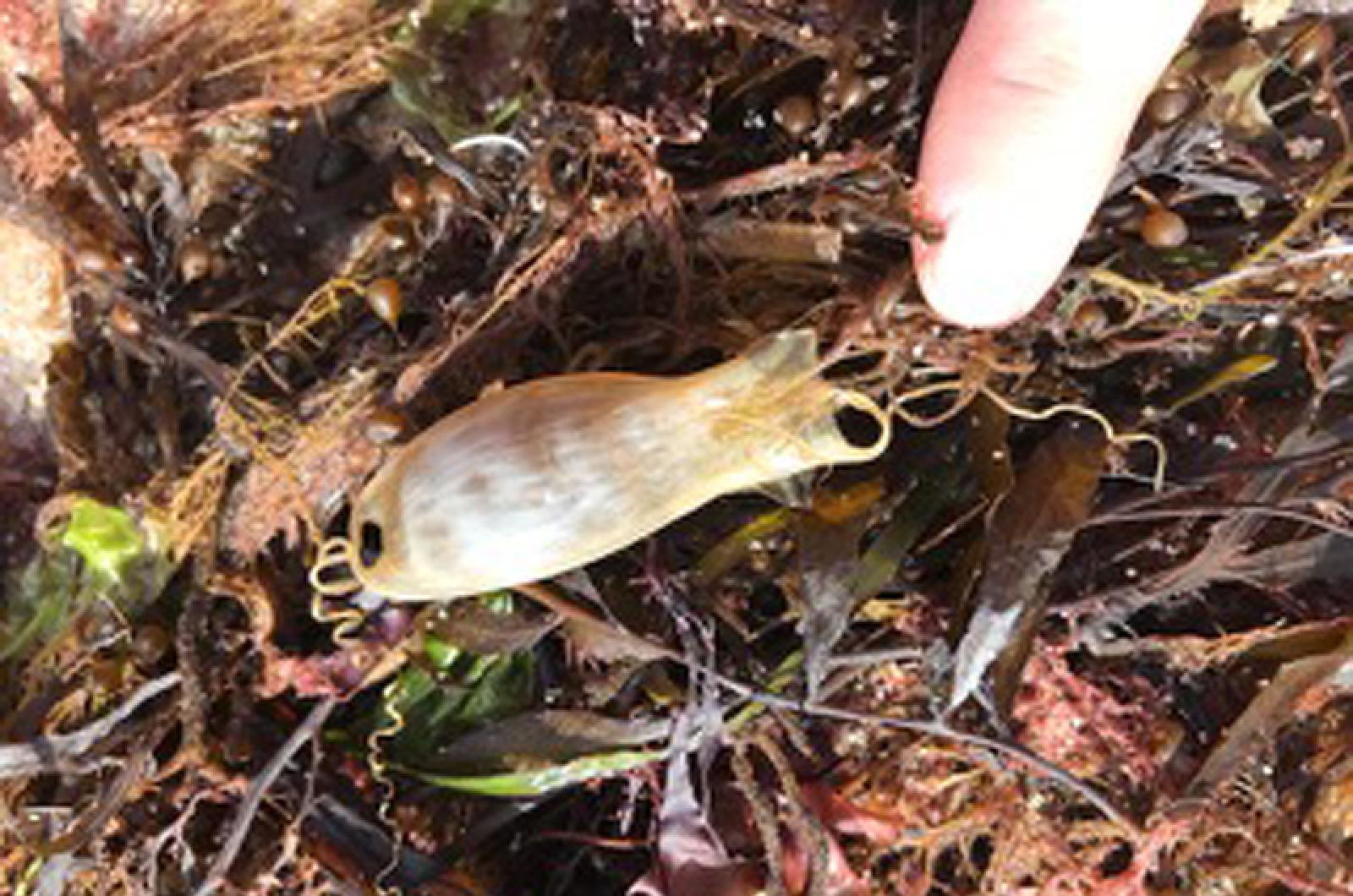It looked like something the cat dragged in.
After our recent spate of northeasters, Steve and Happy Spongberg and Nancy Weaver took a beach walk at Great Rock Bight. The storms had left some interesting calling cards. In the wake of the tossing and turning of the surf, the strong tides, and the whipping winds, the wrack line was full of weeds and wonders.
Among nature’s flotsam and jetsam, they found an interesting object with a feline connection of sorts. Most of us are familiar with skate egg cases, also called mermaid’s purses. They are those black, squarish pouches that hold the developing larva of a skate. Happy, however, discovered a purse that was comparable, but just dissimilar enough to pose a question of identity.
It was a hard rectangular pouch, lightly colored, with spiraling tendrils at each corner. A different creature produced this different egg case.
This fabulous form was a catshark egg case. The cat, so to speak, was out of the bag, since this one was empty. Catsharks are unlike most sharks, which give birth to live young. Instead, about 90 per cent of catsharks produce these special egg cases, also called mermaid’s purses, to house their young.
Catsharks are oviparous, meaning they lay eggs. These eggs are encased in a collagen structure that is produced by a shell gland in the female shark, called an oviducal. After the female releases this egg case, the case rests on the sea bottom amid the rocks and seaweeds, where its tendrils hold fast to another object to keep it in place. The egg will develop into an embryo inside the case, and will be released after a period of time that ranges from a few months to up to a year, depending on the species.
Catsharks are in the scientific family Scyliorhinidae (which translates into “shark nose”), and are ground sharks, which is the largest scientific family of sharks. These ground sharks have also been called “ghost catsharks” because of their propensity to live in deep water at the murky bottom. The name catshark is quite apt, because these sharks possess feline-like eyes.
Included in this family are a few varieties that might be found here: the lesser spotted catshark, flathead catshark, and chain dogfish. “Chain dogfish” takes pet name confusion to a new level, since it is not a true dogfish, but rather a dogfish catshark.
The mermaid’s purse found on the beach at Great Rock Bite was likely from a chain dogfish, and is more commonly seen by folks in bottom trawling fisheries when they bring up their nets. This particular species lays two embryo-filled egg cases, and the young have been observed to emerge from Chesapeake waters in late winter and early spring. Much is still unknown about these elusive cats.
It was the first time I had seen or even heard about the existence of catshark egg cases, and I expect it was a similar experience for the lucky finders. Regardless of the lack of information on these mysterious sharks, it would not be an exaggeration to say that this was literally a case of a storm (and the sea) raining cats and dogs.
Suzan Bellincampi is director of the Felix Neck Wildlife Sanctuary in Edgartown, and author of Martha’s Vineyard: A Field Guide to Island Nature.




Comments (2)
Comments
Comment policy »